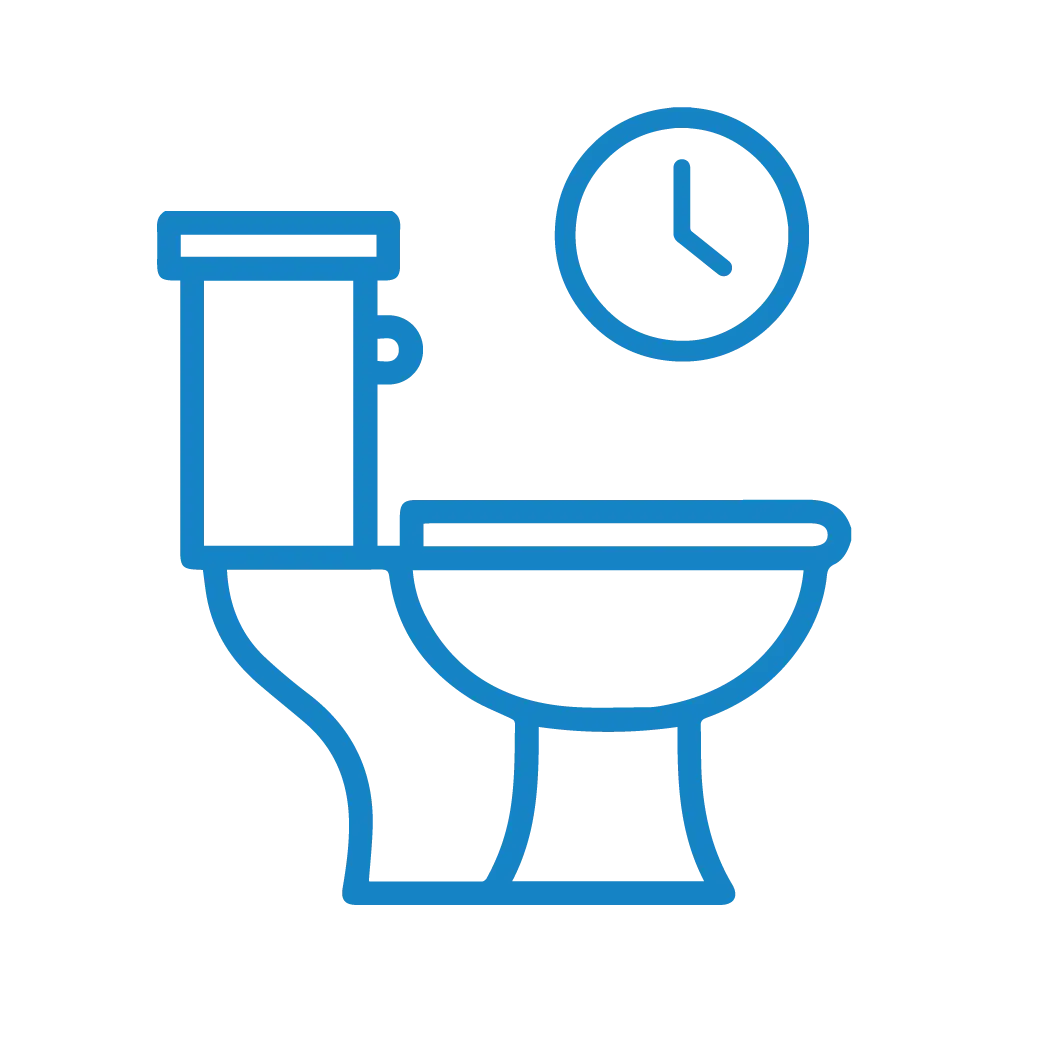OSHA Bathroom Break Laws: Surprising Statistics and Insights
In today’s fast-paced work environment, it’s not uncommon for employees to feel pressured to remain at their desks or workstations for extended periods. However, bathroom breaks are a basic necessity that shouldn’t be compromised. The Occupational Safety and Health Administration (OSHA) recognizes the importance of proper restroom access and has guidelines to protect workers. In this article, we explore OSHA’s regulations on restroom breaks at work and discuss how employers and employees can work together to maintain a healthy and comfortable work environment. Along with questions such as: can you be fired for using the bathroom too much?
Let’s dig in.
While OSHA bathroom break requirements offer a broad overview of the key requirements employers have to meet, it does not recommend any particular toilet policies. So, according to OSHA bathroom break requirements, workplaces must draft policies that comply with OSHA standards. Therefore, OSHA mandates employers to:

Allow workers to leave their work to use the toilet as needed

Ensure the provision of a decent number of washrooms for workers

Refrain from putting unreasonable curbs on toilet use

Ensure that curbs on restroom use do not cause delays
OSHA Bathroom Break Requirements
OSHA, the federal agency responsible for ensuring the safety and health of America’s workers, addresses restroom access in its sanitation standards (29 CFR 1910.141). These standards outline requirements for employers to provide adequate and sanitary restroom facilities for their employees. OSHA also refers to the American National Standards Institute (ANSI) recommendations to determine the number of toilets required based on the number of employees in a workplace. OSHA doesn’t go into specific details such as how long should a bathroom break be at work. Instead, it requires employers to provide employees with reasonable access to bathroom facilities.
5 Facts About Bathroom Breaks at Work
To foster a healthy and productive work environment, employers should adopt the following practices regarding restroom breaks:

Encourage Open Communication: Employers should create an environment where employees feel comfortable discussing their restroom breaks without fear of retribution. Open communication allows for identifying and resolving any issues related to bathroom break laws.

Establish Reasonable Break Policies: Employers should establish policies that allow employees to take bathroom breaks as needed. While it’s essential to ensure productivity, it’s also crucial to recognize that restroom needs can vary from person to person.

Accommodate Employees with Special Needs: Employers should be prepared to accommodate employees with medical conditions or disabilities who may require frequent or more prolonged restroom breaks. This may include adjusting work schedules, allowing for additional break time, or providing more accessible restroom facilities.

Train Managers and Supervisors: Employers should ensure all managers and supervisors know OSHA’s restroom access guidelines and company policies on restroom breaks. This will help prevent potential OSHA violations and ensure employees’ needs are met.

Regularly Assess Restroom Facilities: Employers should periodically assess their employees’ bathroom breaks to ensure they comply with OSHA restroom break laws and adequately serve the needs of their employees, such as adding more restrooms, improving cleanliness, or upgrading amenities.
Restrictions on Bathroom Breaks at Work
Employers must consider any restrictions that may be applied to employees when complying with OSHA bathroom break requirements. While it is not illegal to limit bathroom breaks at work, employers can not impose unreasonable curbs on these breaks.
However, according to OSHA bathroom break requirements, an employee abusing bathroom breaks can potentially face penalties. As a result, they should spend a reasonable amount of time on restroom. A worker’s need for excessive bathroom breaks during work can depend on many reasons. They include fluid intake, air temperature, medical conditions, and medications. However, some common medical conditions require excessive bathroom breaks. They include pregnancy, urinary tract infections, constipation, abdominal pain, diverticulitis, and hemorrhoids. However, restroom breaks frequency can vary from person to person. Therefore, there is no specified schedule or federal workplace bathroom laws.
OSHA Rules on Bathroom Breaks
According to OSHA bathroom break requirements, all restroom facilities to have:

Hot and cold running water or lukewarm running water

Hand soap or other cleaning agents

Individual cloth or paper hand towels

Air blowers

Employers should conveniently station air blowers and hand towels within the restroom or nearby. So, OSHA restroom break laws mandate the minimum number of toilets employers must provide. We derive that number from the current number of workers.
Restroom Facility According To The Number Of Workers
Employees’ Rights and Responsibilities
An employee has an important role in maintaining a healthy work environment concerning toilet breaks at work. They should:

Be Aware of Company Policies: Employees should familiarize themselves with their company’s laws on bathroom breaks and follow them accordingly.

Communicate Their Needs: Employees who require additional or excessive bathroom breaks due to a medical condition should inform their employer to discuss accommodations.

Practice Good Hygiene: Employees should maintain proper hygiene during bathroom breaks and they also need to wash their hands after using the restroom and keep the facilities clean for others.

Report Concerns: Employees should report any concerns about inadequate restroom facilities, unsanitary conditions, or other issues to their employer or OSHA to address the problem.
Bathroom Break Laws for Transgender Workers
According to OSHA bathroom break requirements, employers should allow everyone to use the restroom that matches their gender identity. Therefore, people who identify as men should be able to use men’s restrooms. Consequently, people identifying as women should be able to use women’s restrooms. So, employees should be able to decide the safest and most appropriate toilet to use. Also, men and women should have separate bathrooms. Moreover, other restroom options can include single-occupancy unisex restrooms or multiple-occupancy, gender-neutral facilities with lockable stalls.
OSHA bathroom break requirements also cater to the needs of transgender workers. Workplaces should be mindful of accommodating their transgender workers. However, it is not acceptable to ask a worker to provide official documents for them to use the toilet facility they feel is most appropriate for them. And employers can not ask workers to use a separate toilet because of their transgender status.
Strategies for Employers to Manage Restroom Breaks
Good Hygiene is Good for Business

Schedule Regular Breaks

Implement Flexible Break Policies

Provide Adequate Restroom Facilities

Offer Support and Resources
Addressing Concerns and Misconceptions Related to Bathroom Breaks
There are several common concerns and misconceptions regarding bathroom breaks at office. Let’s address some of these issues to provide a better understanding of OSHA’s guidelines and the importance of restroom breaks:

The Fear of Lost Productivity: Some employers may worry that allowing employees to take excessive bathroom breaks could lead to decreased productivity. However, studies have shown that providing adequate restroom access and bathroom breaks can increase employee satisfaction, improve focus, and better overall performance. Denying employees the opportunity to use the restroom when needed can result in discomfort, decreased morale, and potential health issues.

The Myth of “Reasonable” Breaks: It’s crucial to remember that “reasonable” is subjective and can vary from person to person. Age, health conditions, and medication use can impact an individual’s restroom break needs. Employers should be understanding and flexible in accommodating employees’ restroom needs to ensure a comfortable work environment. How many bathroom breaks is normal at work is therefore contexual.

Employees’ Abusing Bathroom Breaks: While some employees may misuse lenient bathroom break policies, most employees understand the importance of balancing their restroom needs with their work responsibilities. But the primary concern is, “Can an employer limit bathroom breaks?”. Well, employees taking 30-minute bathroom breaks can cause severe problems regarding bathroom break laws since bathroom breaks are limited to an individual’s urgent need. Therefore, employers can address potential misuse by encouraging open communication and fostering a culture of trust and accountability.
The Importance of Compliance and Employee Well-being
It is essential to learn the basic rules and regulations of working in an industrial facility to maintain hygiene and prevent the influence of germs, which can lead to diseases and infections. Compliance with OSHA restroom break laws is a legal requirement and an essential aspect of employee well-being. Employers who prioritize adequate restroom access demonstrate a commitment to the health and comfort of their employees, which can lead to a more positive work environment and increased employee satisfaction.
Conclusion
How many bathroom breaks at work one is allowed remains often undefined. Is it illegal to limit bathroom breaks at work? This is answer is subjective. However, ensuring proper restroom access and restroom breaks is a shared responsibility between employers and employees. Both parties can create a workplace that promotes health, safety, and well-being by adhering to OSHA bathroom breaks rules, fostering open communication, and providing support. Ultimately, a comfortable and healthy work environment contributes to increased productivity and employee satisfaction, benefiting employees and employers.





